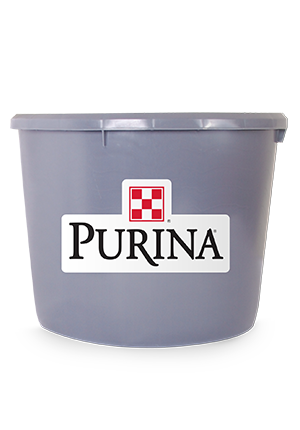
Manage for Success with Automatic Calf Feeders
Calf : Feeding Tools
Animal : Calf

Automatic calf feeders are a great tool for farmers looking to reduce labor and improve the level of nutrition provided to calves. But, they don’t come without challenges. Automatic calf feeders require a higher level of management for success.
In fact, routine dairy calf management practices can make or break success with automatic calf feeders. Here are a few management areas to focus on:
Access to high-quality, fresh water is critical for calf health, calf starter feed intake and growth. Run a complete test for minerals and bacteria at least twice a year and avoid soft water if possible due to its high sodium levels. Waterers are a major source of disease transmission in barns with automatic calf feeders, so they need to be cleaned frequently. If possible, avoid sharing waterers between pens.
Deliver fresh air uniformly to each calf to keep calf respiratory stress levels low. Air speed at the calf level shouldn’t exceed 3 mph in cold weather, but there should be air movement. Consider a positive pressure tube ventilation system to provide consistent ventilation year-round.
Cleaning, sanitation and maintenance
Automatic calf feeders have a lot of moving parts, from the powder hopper, hoses and nipples, to calibration, cleaning and sanitization. Performing regular maintenance will help keep feeders running properly. Run the automated cleaning system three times daily and do a thorough manual cleaning manually of all components, including the nipple, once or twice daily.
Provide a minimum of 6 inches of bedding with excellent drainage to keep urine and moisture away from the calf. Remove soiled bedding, properly clean and sanitize the area, and refresh with clean, dry bedding on a routine basis. Regular cleaning will help eliminate ammonia and the potential for disease spread.
With automatic calf feeders, small groups are typically best. Groups larger than 20 are difficult to manage, especially if calves are less than three weeks old or the age range within the group is more than 10 days. Adequate square footage of 35 to 40 square feet per calf is required for pens with automatic calf feeders.
Introduction to automatic calf feeders
When starting dairy calves on automatic calf feeders, the balance between meal frequency and quantity is critical. Allow calves to start with an intake allowance of ideally 2.5 to 3 liters per visit, for a total daily intake allowance of 7.5 to 12 or more liters per day. After they are acclimated (about one week), adjust allowable consumption volume per meal to desired levels. Minimize assistance of new arrivals to the feeder after the first day or calves will start to expect you to help them.
Success with automatic calf feeders starts with excellent dairy calf management. The Land O’Lakes Animal Milk Solutions team of experts can help you on the path to success. Find your local calf and heifer specialist.
In fact, routine dairy calf management practices can make or break success with automatic calf feeders. Here are a few management areas to focus on:
 Feeding dairy calves water
Feeding dairy calves water
Access to high-quality, fresh water is critical for calf health, calf starter feed intake and growth. Run a complete test for minerals and bacteria at least twice a year and avoid soft water if possible due to its high sodium levels. Waterers are a major source of disease transmission in barns with automatic calf feeders, so they need to be cleaned frequently. If possible, avoid sharing waterers between pens.
 Calf barn ventilation
Calf barn ventilation
Deliver fresh air uniformly to each calf to keep calf respiratory stress levels low. Air speed at the calf level shouldn’t exceed 3 mph in cold weather, but there should be air movement. Consider a positive pressure tube ventilation system to provide consistent ventilation year-round.
Cleaning, sanitation and maintenance
Automatic calf feeders have a lot of moving parts, from the powder hopper, hoses and nipples, to calibration, cleaning and sanitization. Performing regular maintenance will help keep feeders running properly. Run the automated cleaning system three times daily and do a thorough manual cleaning manually of all components, including the nipple, once or twice daily.
 Bedding for dairy calves
Bedding for dairy calves
Provide a minimum of 6 inches of bedding with excellent drainage to keep urine and moisture away from the calf. Remove soiled bedding, properly clean and sanitize the area, and refresh with clean, dry bedding on a routine basis. Regular cleaning will help eliminate ammonia and the potential for disease spread.
 Group size
Group size
With automatic calf feeders, small groups are typically best. Groups larger than 20 are difficult to manage, especially if calves are less than three weeks old or the age range within the group is more than 10 days. Adequate square footage of 35 to 40 square feet per calf is required for pens with automatic calf feeders.Introduction to automatic calf feeders
When starting dairy calves on automatic calf feeders, the balance between meal frequency and quantity is critical. Allow calves to start with an intake allowance of ideally 2.5 to 3 liters per visit, for a total daily intake allowance of 7.5 to 12 or more liters per day. After they are acclimated (about one week), adjust allowable consumption volume per meal to desired levels. Minimize assistance of new arrivals to the feeder after the first day or calves will start to expect you to help them.Success with automatic calf feeders starts with excellent dairy calf management. The Land O’Lakes Animal Milk Solutions team of experts can help you on the path to success. Find your local calf and heifer specialist.




